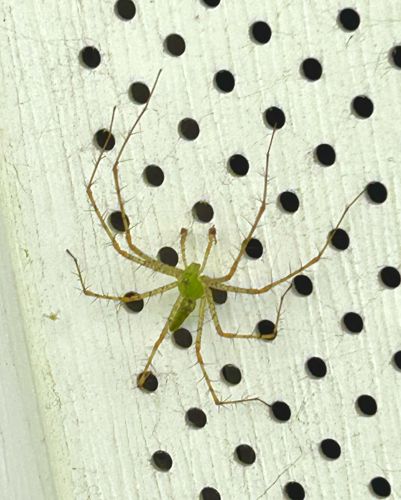Green Lynx Spider
Scientific Name: Peucetia viridans
Order & Family: Araneae, Oxyopidae
Size: Females typically range from 12-22 mm (excluding legs), while males are smaller, usually 10-12 mm.

Natural Habitat
Typically found on plants, shrubs, and tall grasses. They prefer sunny, open areas like gardens, meadows, and agricultural fields.
Diet & Feeding
Strictly carnivorous, preying on a wide variety of insects including moths, butterflies, bees, wasps, flies, grasshoppers, and even other spiders. They ambush their prey rather than using a web to trap them.
Behavior Patterns
Green lynx spiders are active hunters during the day and night. They do not build webs for prey capture but instead stalk and ambush their prey. They are known for their excellent eyesight and agility. Females guard their egg sacs, which are often green or yellowish and suspended among vegetation.
Risks & Benefits
Green lynx spiders are generally beneficial as they are effective predators of many agricultural pests and other insects. While they can bite humans if provoked, their venom is not considered dangerous to humans, typically causing only localized pain and swelling. They pose no significant risk to humans and are a natural form of pest control.
Identified on: 9/19/2025